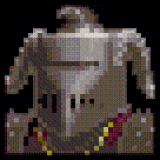Game OVA Season 3: Episode 2 — Mashin Eiyuuden Wataru
By Mento 3 Comments
I've been looking for something to help me through the hot 'n' humid summer months and what better way to beat the heat than to stay indoors watching questionable anime and playing questionable games based on said anime? For a rundown of this little project, check out the first episode.
The Property

Mashin Eiyuuden Wataru, or Legend of the Magic God Hero Wataru (thereabouts) but usually localized as just Mashin Hero Wataru, is a fantasy shounen (i.e. anime for boys aged around 8-16) anime about a grade-schooler, the titular Wataru Ikusabe, who is isekai'd (in the non-lethal sense) into a magical world called Shinbukai which has at its locus the multi-layered mountain land of Senkaizen, or Mt. Senkai. In order to defeat Mt. Senkai's ruling tyrant on behalf of the mystical dragon who sent him there, Wataru must complete various objectives on each "tier" of this structure before he can move up to the next, all the while befriending allies who also wish to topple the oppressive ruler. Wataru also gets a sapient mecha buddy that fights alongside him. It's the 1980s after all, and toy merch is important. Despite the robots, the show follows the typical isekai fashion of embracing clichés of the fantasy RPG genre with magic and swords and such.
Unlike most of the other properties we've covered on Game OVA, Mashin Eiyuuden Wataru was expressly created to be a multimedia animated thing for kids so there's no preceding manga or light novel series to bring up here (though both would eventually follow). Along with the original 45-episode TV series followed by two more seasons of similar length, the property was also adapted into five OVAs, some radio shows, toys, and—critically for our purpose here—at least five video games, two of which will be featured in-depth but the others will certainly get a brief look-in. Why choose to cover Mashin Eiyuuden Wataru? You'll see when we get to the game section but this is another patented case of a "this was based on an anime?" whitewashed localization that I've been curious about for many years. Best part about covering shounen anime is that you very rarely have to worry about inadvertent nudity that might get you in trouble. Mostly. The original Dragon Ball notwithstanding.
Cast
- Wataru Ikusabe: The protagonist. A normal Japanese nine-year-old with a lot of courage (as it were) and a strong sense of justice who was recruited by a dragon god to save Shinbukai. Pretty much your typical shounen MC.
- Ryujinmaru: The mecha "mashin"—a pun on the English word "machine" and the Japanese term "majin" meaning a magical race of powerful beings, since these mecha are inhabited by Shinbukai's ruling spirit pantheon—that partners with Wataru and fights alongside him. His true form is the golden dragon that whisked Wataru away to Shinbukai.
- Himiko Shinobibe: A friend Wataru meets in Shinbukai, Himiko is the leader of the Shinobibe Ninja Clan and joins him in his fight with her ninjutsu skills. She's even younger than Wataru and that often comes through with her frequent immaturity, despite her prolific ninjutsu powers. Why is everyone leaving the fighting to the children?
- Genjinmaru: Himiko's mashin. Like her, this mecha has a ninja-like appearance.
- Shibaraku Tsurugibe: A stocky middle-aged swordsman who joins Wataru. Has a brash, outspoken personality and despite all his confidence often acts as the buffoonish comic relief. Picture a samurai version of Mr. Satan with an impressively square jaw.
- Senjinmaru: Shibaraku's dual-katana-wielding mashin. Probably compensating for something.
- Doakudar: The evil tyrant Wataru was sent to depose. Has a cool helmet and cape.
The Anime
.jpg)
There's a lot of Mashin Eiyuuden Wataru anime out there—between the three TV series so far alone there's 142 episodes, and then there's the five OVA and the more recent net animation series—but we're only going to concentrate on the first three episodes of that original TV show. Said series aired between 1988-1989 on NTV (Japan's first commercial TV station, and the oldest after the publicly-owned NHK) and was created by Sunrise Studio, with Shuji Iuchi as its director and Takao Koyama as its main writer. Its creation was credited to one Hajime Yatate, which is actually a pseudonym that collectively comprises the staff at Sunrise.
This is our fourth Sunrise Studio subject featured on Game OVA: they were also responsible for City Hunter (covered by the very first Game OVA), the Dirty Pair: Project Eden movie, and the similarly-themed Magical Hat. Just to refresh the ol' memory banks, Sunrise is best known for the many branches of the Gundam franchise but were also behind Cowboy Bebop, Code Geass, Inuyasha, and many, many others. Shuji Iuchi directed episodes of multiple TV anime shows mostly involving mecha, like Mobile Suit Zeta Gundam and God Mazinger, as well as possible future Game OVA candidates Honey Bee in Toycomland (based on Hudson's Adventure Island games) and Madou King Granzort. Mashin Hero Wataru sees him take on the showrunner role for the first time in his career and he'd go on to direct both of the sequel TV seasons and a couple of the OVAs. He passed away in 2016 before he could retire, with several shows released in 2016 still carrying his credit. Takao Koyama is a screenwriter who worked on many famous shows including Dragon Ball Z, Saint Seiya, and Urusei Yatsura (as well as definite future Game OVA candidate Slayers). I think he had more involvement with the second season of Mashin Eiyuuden Wataru but Wikipedia also credits him for the first. I believe he's still around but at 76 he's almost certainly retired from the hectic work of TV screenwriting.
Episode 1: The Hero is a Fourth-Grader
Like any good Japanese fantasy RPG, we start on a sleeping Wataru getting awoken by his mother (after a mystical dragon did... something to his sleeping body earlier that morning) and sets out to school on wheelies choosing to take a shortcut through "Dragon Pond", even though it looks to be at the top of a mountain, to get there before the bell rings. Through a series of coincidences he ends up acquiring a dragon tooth necklace that he places on a clay mecha doll he made during class and upon naming the doll in the vicinity of Dragon Pool the dragon from before pops out and introduces himself to the correctly terrified Wataru. The dragon, being the enlightened creature that it is, lunges at the poor boy while making Godzilla roars (literally; I think someone broke into the Toho sound department overnight) and then effs off into space with Wataru in tow. Wataru, thinking he's being awoken by his mom again, yells for a crowd of fantasy world onlookers to be quiet before he awakes fully to find himself far from home. They tell him that he's the chosen one that will save the world by travelling up the local multi-tiered mountain dungeon Mt. Senkai and fixing whatever's broken up there. Gotta say, this is some very economical storytelling so far, but I guess I'm grateful I didn't have to watch some truck flatten a grade-schooler. Isekai transportation was a lot more gentle in the 1980s.
The crowd bring him over to their version of the Dragon Pool, which has been devoid of water ever since the rainbow atop Mt. Senkai went monochrome and adversely affected the local weather. While changing into his hero gear (including some new wheelies; I guess skates were a big deal at the time) a rainbow bridge shows up from Mt. Senkai and deposits the first villain of the show: a guy with a crew cut and shades named Schwarvinegar piloting a mashin that has a giant revolver for a head. Huh. (Remember that mecha for later.) He's there on behalf of his boss, one "Cruising Tom": the pilot of the mashin Second Gun (not Top?) and ruler of the first layer of Mt. Senkai. Schwarvinegar's been sent down here to conquer the village of refugees at the base of the mountain since they're all just sitting around disrespecting his Dark Lord by waiting for a mythical savior (who is also a literal child) to arrive. Being the only one who thought to bring a mecha to a knife fight, he quickly kicks everyone's asses and puts Wataru on the ropes until the kid figures out how to summon Ryujinmaru, his own mashin, and level the playing field. I guess fantasy Arnold Schwarzenegger didn't count on meeting his worst nightmare: some 9-year-old with a sword. Ryujinmaru cuts the enemy mashin in half and sends Schwarvinegar packing, ending the first episode by taking the very slow (but still sweet) rainbow bridge ride to the first layer of the mountain.



So far, so typical shounen hero anime. They managed to combine mecha, fantasy isekai, bad Arnold impressions, and roller skates into one show. No wonder the kids ate this shit up in 1988. The humor's not bad either: it's definitely going for that Dragon Ball irreverence with jokes about how incompetent both the heroes and villains can be. For instance, Himiko tries some fire ninjutsu on the boss only for him to puff it right back at her to set both her and Wataru (whom she was trying to protect) aflame, and at one point the boss in turn has to stop the fight to get out and manually reload his dumb mecha's dumb head-revolver after recklessly firing all six bullets to intimidate everyone. I'm surprised we got to see so much of pre-isekai Japan too, setting up Wataru's classmates (including a love interest, Yumi, and a rival, Shun) even though we're unlikely to see any of them again soon. The broadly cartoonish and expressive animation's overall good: Sunrise didn't skimp on what could have been a cynical cheap cash grab to sell action figures though I wonder how much they might recycle in episodes to come, especially Ryujinmaru's fighting poses and the boarding sequence as Wataru enters a dream space where he controls a golden dragon version of Ryujinmaru directly (which I'll admit is both trippy and cool for a kids' show). I'm also curious if all the villains will continue to be contemporary Hollywood parodies, since that's quite the direction to go. Just to clarify, the best "you need to have seen these" movies of 1988 include Die Hard, Beetlejuice, Heathers, Who Framed Roger Rabbit, Big, Willow, Bloodsport, Midnight Run, They Live, and, uh, Rain Man. I guess we'll see if there's any mashin based on any of those. Just a warning: if one of them starts yelling about missing Judge Wapner, I'm bailing.
For now, let's just keep on trucking (sorry, isekai joke) to episode two.
Episode 2: The Mysterious Item, Hentama!
So, Wataru and Ryujinmaru are told by the elder of the village to look for a magical pearl on layer one of Mt. Senkai around the region called Double-Dragon Cliff. I believe that's the spot where a very large, shirtless, bald man was seen falling to his death after being knocked off the edge by a flying kick. After escorting Wataru through the waterfall that operates as the entrance to "layer one", Ryujinmaru vanishes on the kid (his presence on the show has more of a "break glass in case of stupid boss monster you need a mecha to beat" role, like the Zords of Power Rangers) leaving him to scout around for this cliff with a pearl on it. Probably safe to let a child roam around on his own where there's a bunch of faults and chasms. Immediately falling down one of these chasms, Wataru's saved by the burly Shibaraku—who introduces himself as an invincible swordsman and has the gigachad chin to prove it—who seems to know why he's there, but is also skeptical this little kid has what it takes to be a legendary hero. One action sequence later where Wataru's strategy to prove his worth involves using his skates to build up enough speed to headbutt Shibaraku in his balls (truly a heroic play) and the duo decide to travel together for a while.
There's a campfire meal scene where the two exchange riddles—Wataru's already heard all of Shibaraku's, and can only offer Zoomer anti-joke riddles in exchange—because it turns out there's some puzzle to be solved at Double-Dragon Cliff in order to reach the pearl. Before they can get there to start figuring it out, however, they're ambushed by Schwarvinegar and a trap involving multiple little fire-breathing dragon things (they already referenced Godzilla, so what's a few Minillas?). The tiny guys brush off Shibaraku's sword attacks and Wataru's... skating around really fast (OK, is that going to be his thing? Because they gave him a sword is all. Not that I think nine-year-olds should be swinging swords around, necessarily...) creating an issue until Himiko hops down from out of nowhere and placates them with what I can only describe as rubber shuriken laced with sedatives. The trio then reach Double-Dragon Cliff and find the pearls they want are in the mouths of the two dragon statues (one red, one blue, of course) and Wataru and Himiko immediately set out to take them. However, this causes the dragon statues to come alive and bite down: Wataru narrowly escapes but Himiko is graphically killed after her head is chomped off. Fortunately, it immediately grows back (no-one is quite sure how and are visibly shaken by this development, including the tailing villains of Schwarvinegar and some bird guy who's been spying on Wataru) and the trio regroup to contemplate how to proceed.



Turns out, they need to take the pearls simultaneously but no-one's ever been able to get the timing right before now. Himiko decides to use a ninjutsu that will make a rock move for reasons that aren't immediately apparent as all this ends up doing is crushing Schwarvinegar and pissing him off enough to attack them with his new mashin, which is just the previous one only now it has a big "2" written on its calves. Shibaraku says he's got this and asks Schwarvinegar nicely if he can use the nearby phone booth real quick to summon his mashin, Zanjinmaru, and the two get ready to throw giant mechanical hands. While this is happening, Wataru notices the sunset is causing the shadows of the two dragon statues to get closer together and uses this optical illusion to somehow bring the statues physically near enough for him to grab both pearls. Well, of course no-one was going to figure that out. They merge into a red/blue powerball and the villains are gracious enough to toss a bunch of disposable "demon soldiers" at Wataru so he can test out the pearl: it smashes all of them while bouncing around wildly, giving this grade-schooler yet another weapon of mass destruction to play around with. They also test it on a raging Schwarvinegar's mecha and smash its dumb sunglasses, causing it to launch itself at Wataru who then, of course, summons Ryujinmaru to put him back in his place. Not like we can leave it to Zanjinmaru or anything. The newly improved Mk. 2 turns out to be more of a match this time, even deflecting Ryujinmaru's blade... until it runs out of bullets, and Ryujinmaru just bisects it again. I guess we need to wait for a Cliff Eastwood/Dirty Harry mecha before this stops happening. Equipped with the pearl (redubbed "hentama" by Himiko, which translates to "weird ball") and his two new companions, Wataru leaves Double-Dragon Cliff behind and heads to his next destination. Final Fight Bluff? Streets of Rage Crag? Ninja Baseball Bat Man Escarpment, maybe?
Episode 3: Be Careful of Kurama!
This episode focuses on Kurama, the birdman spy I mentioned earlier. He's been tailing Wataru and his group since the kid arrived in this world but besides him smirking a lot while he reports a minion's latest failure to Doakudar he hasn't really done a whole lot else. I bet Doakudar must've said something like "so that's when you stepped in and finished the heroes off while they were exhausted, right?" and caused Kurama to have a mild panic attack. What actually happens is that Doakudar suggests Kurama join Wataru's party as a double agent and secretly assist any fallen subordinates that might need rescuing after they're defeated (oddly benevolent towards his lackeys, this dark overlord guy, but maybe he just wants to kill them for their incompetence himself). To help, Kurama's given his own mashin (which would almost be impressive if every other named character didn't also have one): Kuujinmaru. It looks like a big stupid bird. The last thing we learn from this scene is that Kurama was actually transformed into a half-avian/half-man anthro and changing back is his whole motivation. Dunno why, flying around and pooping on things from a great height sounds awesome. Maybe he's just getting tired of all the Falco jokes?
As if sensing the urgency at hand Wataru, Shibaraku, and Himiko are just screwing around, first with a race (that Wataru immediately cheats at by employing his skates, while still being slower than the little girl ninja) and later with a swordplay demonstration as Shibaraku attempts to carve in half a rock that's sitting on Wataru's head with his iaido strike. I guess it's good they're all getting along well enough that they've already advanced to death games. Turns out Shibaraku cheated: he pulled out a hammer, smacked the rock with it to crack it in half, and put it back in his coat all faster than the eye can see, which doesn't sound any less impressive or difficult. I applaud his commitment to the bit. Speaking of committing to bits, we have an introduction to our next American pop culture-themed foe: a handsome idiot calling himself Thunder Blue (geez, I haven't thought about Blue Thunder in literal decades. It's like Airwolf! But for cops!) who plans to do away with the trio once they enter his domain. Thunder Blue's loud proclamations to the town about how great he is causes blocks of land to rise and fall at random, separating families and couples and turning the place into some nightmarish Minecraft Creative Mode lookalike. A thoroughly done townsperson tells Wataru's group that the Gods Flute can undo the damage and restore the first color to the mountain's rainbow, but they'll need to find Cruising Tom to get it back. A joke that lands flatly also causes the team to drop down a pitfall and they're eventually saved by a passing Kurama, taking advantage of the situation to ingratiate himself into their group... or at least he would if they didn't immediately distrust him and call him a crow. Maybe it's the eyepatch? Kurama then bolts on them, leaving them stranded down the pit. Himiko's just fine: she naturally has a ninjutsu that can get her out but the others stay trapped until they start yelling and the pitfall undoes itself and renders everything moot. Hey, these 26 minute episodes don't fill up themselves, you know.



Thunder Blue jumps into his mashin Hellcopter to take the fight to the party directly, I guess because the stupid pitfall/tower blocks were taking their sweet time, and attacks them just as Kurama got over the whole "being called a crow" thing and offers to help them find Cruising Tom (who I guess prefers Days of Thunder over Blue Thunder). The first attack involves dropping autographed photos on them—more a charm offensive than the regular kind—though he's quickly rebuffed by Himiko's teasing (if she wasn't coded as a kid she'd seem like a psychotic bully instead, not that there's not a whole lot of difference there) and switches to combat mode. While Himiko's distracting the guy, Shibaraku locates a payphone (already a timeless running gag) and Wataru tries in vain to use his powerball hentama to deflect the Hellcopter's miniguns. Those things have way more than six bullets; I've no idea how he gets out of this one. Shibaraku's Zanjinmaru offers to cut down the Hellcopter but runs into the slight tactical snag of not being able to reach it while it's airborne. Realizing this is all on him and Ryujinmaru again, Wataru summons his buddy after distracting Blue Thunder with a tongue-twister and finds out that... Ryujinmaru also can't reach. Man, this is like dealing with pegasus knights in Fire Emblem all over again. We do have a flier on the team though, sorta, with Kurama and his Kuujinmaru mashin but he's a bad guy so he swoops in to save Thunder Blue just as Ryujinmaru throws the boss's stupid javelin back at him (he's got at least three guns on that thing, why bring a javelin?) and then escapes, with none the wiser as to who might be piloting this mysterious bird-shaped mashin. The fight then ends with Ryujinmaru devising a plan where Wataru yells out and causes platforms to rise, launching themselves high enough to hit Thunder Blue in mid-air. Thunder Blue responds with an incredible plan: throwing his own mashin's rotor at them. It's quickly deflected and then the Hellcopter immediately falls to the ground with nothing to hold it up, allowing Ryujinmaru to once again bisect the thing and send Thunder Blue flying away like Team Rocket. Kurama surreptitiously strolls back into the group, claiming to have been off-screen digging up Cruising Tom's location. With that information in hand, the group of four head to their next adventure.
That's going to do it for this coverage though. I enjoyed this show, I'll admit, but perhaps not enough for another forty-two episodes. It's the kind of repetitive kids' show format that works best in weekly half-hour increments than trying to binge them all in a row like this. I was turning around on the show's visual style and how almost every adult is some stocky weirdo with an equally stocky mecha to ride around in. The Dragon Ball visual comparison is still very apparent with each episode, whether they involve magical balls and Chinese myth dragons or otherwise, but I think Mashin Eiyuuden Wataru has enough going on with its sense of humor and cool mecha battles to set itself apart from the Toriyama cultural phenomenon that probably dominated the airwaves at the time.
Still, an anime is only as good as its video game adaptations—an extremely wild take if I meant it at all seriously—so why don't we go check those out?
The Game(s)
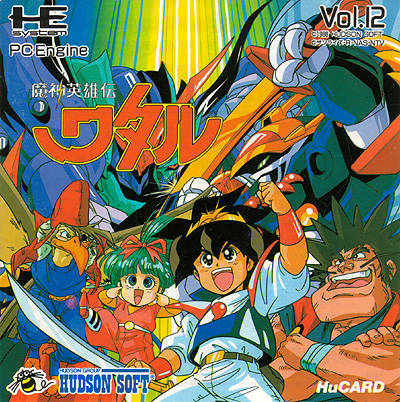
As you've probably already surmised by now the headliner here is the PC Engine/TurboGrafx-16 action-platformer adaptation of Mashin Eiyuuden Wataru which retained its name as-is in Japan but for largely inscrutable reasons underwent a title change and graphical overhaul when released overseas and instead became Keith Courage in Alpha Zones, debatably one of the greatest or worst titles for anything ever. Real "Billy and the Cloneasaurus" levels of trashy. It was a pack-in game for the American TurboGrafx-16 and so has lived on with a certain degree of notoriety among those fortunate(?) enough to have opted for the TG16 over the Sega Genesis or SNES as their 16-bit console of choice back near the beginning of the 1990s.
Mashin Eiyuuden Wataru/Keith Courage in Alpha Zones was developed by Advance Communication Company, a Japanese contract developer that frequently worked on licensed tie-ins and ports. Active mostly in the 8-bit era they purportedly lasted as long as 1994 and worked on games for a great many systems in the meanwhile, focusing on market leaders the NES and SNES for the most part. They were behind most of the Ys ports for those systems, for instance, as well as the NES's infamous Dr. Jekyll and Mr. Hyde and Dynowarz: Destruction of Spondylus, the latter on its way to meme status thanks to Jeff Gerstmann's Ranking the NES! show and his frequent bemused utterance of its name when determining the placement of a recently played game. If he didn't already know that they were behind Keith Courage as well, I'm sure he'd get a kick out of learning that tidbit. The game was published by Hudson in Japan and NEC in the US, both companies being heavily involved in the hardware side of the TG16 system. One last note: I've actually covered this game before as part of the Octurbo series I did years back, so I'll be focusing here on how effectively the game handles its subject matter and the changes that were made to the localization.





















Does it do right by the anime? Um. In the sense that it often all feels like a big joke, perhaps? It's an action game where you transform into Ryujinmaru to fight bosses, so they got that part right at least, but I'm surprised they didn't incorporate Wataru's rollerskates at any point. Maybe they didn't want it to feel too "Adventure Island" during the Wataru sections. Aesthetically it's just about there but I'm not sure it necessarily captures the spirit. Way fewer slapstick gags, for one.
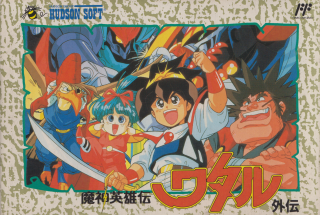
Our next game is Mashin Eiyuuden Wataru Gaiden, a Famicom (NES) action-RPG from 1990. It was developed by Westone and published by Hudson, the former best known for their Wonder Boy series (which the TG16 game resembles more than this one does). It saw a fan translation by Hubz in 2013 and that's what we'll be using for this playthrough. As for the type of game it is, it follows after a few action-RPGs of the era by splitting the game into an "adventure" mode which uses a top-down perspective as you go around talking to NPCs and resupplying at shops and inns and an "action" mode triggered by random encounters which switches to side-scrolling real-time combat similar to Zelda II. Right now the bar is set at whatever low garbage level Keith Courage put it at, so I'm hopeful this game might have a shot at surpassing it to be the best (current) Mashin Eiyuuden Wataru adaptation.






























I was kind of enjoying it for a while until I lost my chance at its one missable RetroAchievement (which wasn't even labelled as such on the site, so cheers for that) so... I kinda lost my motivation to finish it. It's a fine game, I suppose. At least as far as NES RPGs go it's definitely in the upper echelon.
Does it do right by the anime? Yes and no. While I do think it is a better game than Alpha Zones it feels far more detached from the license, to the level of "the developers seemed to be aware that the anime existed and had a bunch of names and character designs lent out by the showrunners but that's about it". It doesn't even have the multi-layer mountain aspect to its world design, which was the closest thing the show had to a uniquely video game concept.
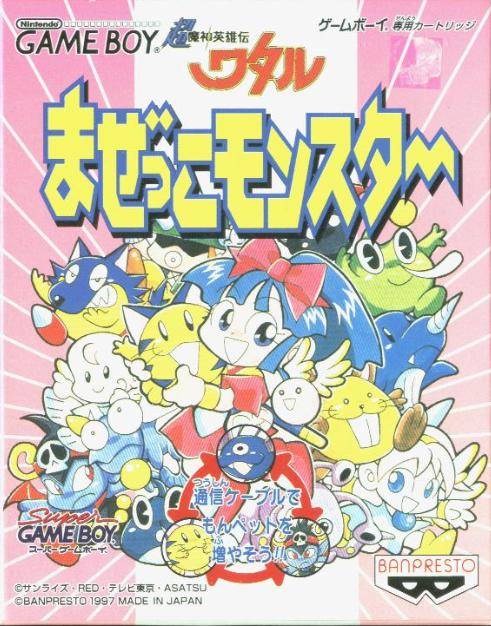
The next two, Chou Mashin Eiyuuden Wataru: Mazekko Monster and Chou Mashin Eiyuuden Wataru: Mazekko Monster 2, are Game Boy games released towards the end of the 1990s that are based on the third season, Chou Mashin Eiyuuden Wataru (or Super Mashin Hero Wataru), which actually replaced the second series with an alternate continuity. It nevertheless involves Wataru coming back to Shinbukai to climb Mt. Senkai again with his friends in order to defeat a new demon lord, Ankokudar, who has imprisoned everyone's souls, turning the more negative citizens into his personal army of henchpeople. The show aired between October 1997 and September 1998 and it's right in that year-long gap that these games were released. Both games were developed by Alpha-Unit (sadly no relation to AlphaDream; now there's a portable RPG developer) and published by Banpresto, who would eventually go on to feature the mecha of Mashin Eiyuuden Wataru in one of their Super Robot Taisen/Wars crossover games.
To perhaps no-one's great shock considering the timing of their releases (Pocket Monsters Red/Green came out in early 1996) they're monster-raising games with a whole bunch of menus to navigate. They're closer to the Tamagotchi style of monster-rearing with all the micromanagement of their food intake and other... biological processes. Beyond my level of Japanese to parse, at any rate. Bandai were already full steam ahead at the time with their own Pokémon/Tamagotchi imitation franchise Digimon, but I guess they figured leveraging some extant anime licenses for the video game genre flavor of the week wouldn't hurt either.


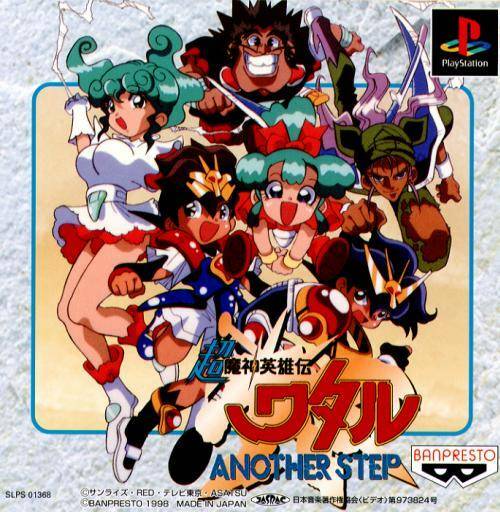
Finally, we have Chou Mashin Eiyuuden Wataru: Another Step: a 1998 PlayStation turn-based RPG that was developed by Aspect and once again published by Banpresto. Aspect was predominantly known at the time for being the developers behind several Game Gear-exclusive Sonic games, like Sonic Blast (not the "3D" one), Tails Adventure, and Sonic Chaos. They'd continue working with Sega on Saturn and Dreamcast games but had largely crossed over to forgettable licensed fare for any system that would take them by the CD era. Even so, there's some notable games on their resume from this period, including co-development (with Sega internal division Overworks) on the GameCube Skies of Arcadia: Legends remaster which bodes well for their RPG bona fides. Chou Mashin Eiyuuden Wataru: Another Step is also based on the Chou/Super anime continuity and, while I wasn't going to fiddle around with PS1 disk images for the sake of a non-translated RPG I'd probably barely make it five minutes into, I did like the look of its axonometric world and FMV-heavy presentation. That isometric battle screen is very reminiscent of Ogre Battle, Breath of Fire, and Suikoden so I'm down to try any other game that uses it. I suppose I'll keep my eyes peeled for a fan translation (not that I'd know where to check for news with ROMHacking dot net going away).

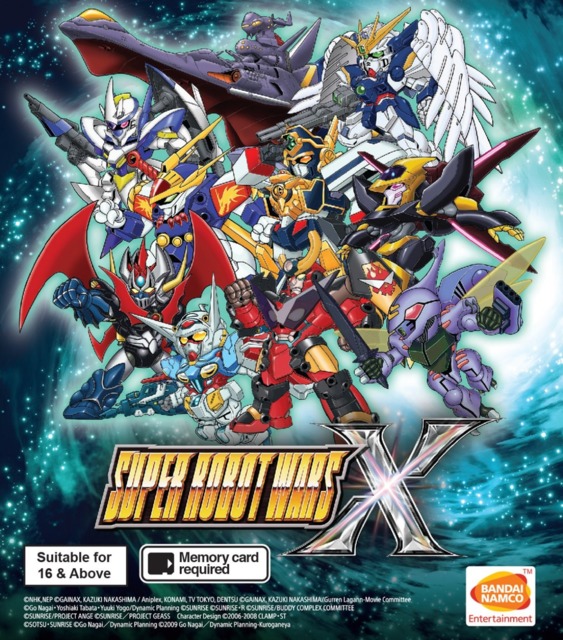
Finally, finally, there's a few honorable mentions. The first is a DS game, Oekaki Puzzle Battle: Mashin Eiyuuden Wataru Version, which was going to be part of a series of licensed picross games but I guess the developers (Sunrise themselves) balked on adapting what was becoming an obscure license by the mid-'00s. That, or the one game in the series they did release (Oekaki Puzzle Battle Vol. 1: Yuusha-Oh GaoGaiGar Version) maybe didn't hit sales expectations and that torpedoed development on the others. There's also that Super Robot Taisen game I mentioned before that debuted some Mashin Eiyuuden Wataru mecha: that would be Super Robot Wars X, which released in 2018 on Switch, PlayStation 4, PlayStation Vita, and (in Southeast Asian territories only) Steam.
And that about does it for all the button-Mashin video games we have available here, thus bringing us to the end of another episode of Game OVA. It's heartening to know that if you ever make an anime with mecha in it it'll probably live on in one Super Robot Wars game or another. Overall, I think this franchise didn't quite have the introduction to the west that it deserved but at least seemed beloved enough in its home country and its neighbors, using whatever combination of superheroics and mecha and ninja and dragons and balls needed to make its mark on what was no doubt a competitive market for shounen TV anime. Even with its kitchen sink approach, though, I think it has enough of a distinctive goofy personality of its own to stand with the bigger names of the period. Man, as a kid in the '90s I would've loved to have seen a version of this show localized in the west with the same laissez-faire approach to the original series continuity that Samurai Pizza Cats/Kyatto Ninden Teyandee enjoyed (though maybe avoiding the early internet edgelord goofs of Ghost Stories).
